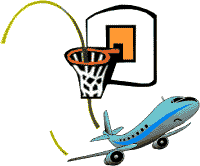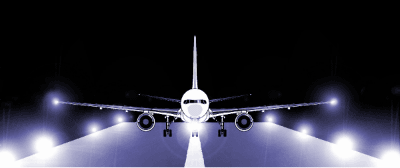Distraction is frequently cited as a factor in ASRS reports on taxiway and runway incursions. Regardless of the perceived importance of some tasks relative to others, the most important task is the one at hand. Getting safely to or from the runway is the most important task while taxiing.

This B737 crew encountered three problems common to taxi incidents - misunderstanding, assumption, and distraction. Communication and concentration could have helped them avoid an embarrassing "shuffle" off the active runway.
- ... I heard, "Taxi to Runway19," but I was not focused on the task at hand and missed the added phrase, "Hold short of Runway 10." The First Officer read back the hold short instruction (I missed it again) and he then began recalculating our takeoff data. [This] caused the First Officer to be head down during my approach to the hold short point... I had switched my attention to other things. As I taxied, I began tuning the radar and formulating a weather escape plan. I simultaneously discussed with the First Officer the bleed air and flap configurations for our heavy aircraft on a fairly short, wet runway. I was also preparing a rough mental draft of a pre-takeoff announcement about the impending turbulence on the climb out... As I approached Runway 10, I saw an aircraft in position at the other end. I assumed he was in position and hold, since I "had" clearance to cross. To my horror, as I crossed, I saw the other aircraft start rolling. I added power and got quickly out of the way.
In the past, I have always said aloud any hold short instruction just to reinforce it to myself. From now on, I will ask my First Officers to ensure that I repeat the hold short instruction. Additionally, I will not let myself become distracted from the task of safely taxiing the aircraft.

When crew members work as one, they can avoid mistakes. In this report, the First Officer's mind was on other matters as the Captain strayed from the true path.
- ...Our departure was changed to Runway 9L... I went head down to reprogram the FMS... As I looked up to see our position, I did not see all blue taxi lights. There was a mixture of blue and white. I thought it might be Runway 12. I also saw an aircraft at the arrival end of Runway 12 in position with all its lights on... I said to the Captain, "No. No. No. We are on the runway!" We were supposed to have turned... At the same time, ATC advised us that we had crossed an active runway. The Captain then understood his mistake... He had heard, "Taxi to" and saw the aircraft on Runway 12, so he thought he had been cleared to cross Runway 12... He stated that something did not seem right...
The Captain should use the First Officer [to assist with] taxi. The First Officer should always be mindful of instructions and location and only go head down when there are no turns or runway crossings to be performed.

Safe taxiing requires the attention of both crew members. This is especially true at night, when the often-reported sea-of-blue-lights factor adds to the confusion. The First Officer in this report was adjusting the Mic when the Captain missed the lead-in to the blues. A little harmony might have led to a more successful road show for this duo.
- ... Clearance was, "Taxi to Runway 27 via Kilo, Charlie, and Delta. Hold short of Runway 33 at Delta." I read this clearance back while the Captain studied the airport chart. As the Captain was taxiing, I was running the checklist and then programming the FMS and verifying the route on the chart. I then studied the departure procedure... At this point Ground [cleared us to] cross Runway 33 on Delta and taxi to Runway 27... While I read back this clearance and changed the radio frequency, the Captain followed the wrong lights onto Golf instead of Delta and taxied onto Runway 33. There was no way to cross the runway on this taxiway... The Captain elected to take the shortest route off the runway by doing a 180-degree turn and exiting on Taxiway Golf... Due to the time it took to clear the runway, an aircraft on final approach had to go around...
Both of us should have just concentrated on the task at hand (taxiing at a major airport at night) to prevent any runway incursions.


 The
chances of an unintentional, gear-up landing in a state-of-the-art,
commercial aircraft are very remote. But the distractions of a high,
in-close, slam-dunk approach along with nearby traffic can raise the
odds. In this report to ASRS, a B757 Captain described what happened
to his team when they forgot the fundamentals. They rallied at the
buzzer, but as the Captain said, "Never again..."
The
chances of an unintentional, gear-up landing in a state-of-the-art,
commercial aircraft are very remote. But the distractions of a high,
in-close, slam-dunk approach along with nearby traffic can raise the
odds. In this report to ASRS, a B757 Captain described what happened
to his team when they forgot the fundamentals. They rallied at the
buzzer, but as the Captain said, "Never again..."
- ...On a vector for a visual we were held at 6,000 feet past INTXN and asked to keep a B737 in sight (he was making a visual to the right parallel runway). We had to ask for lower and then stepped down and slowed to 190 knots. Because we had to slow and get down, I used speed brakes and then extended flaps on schedule to 20 degrees. We were then cleared to execute the visual approach. I was retuning the ILS, and called for flaps 25 degrees. I believe that I had asked for the gear down. I was also watching the traffic on the right runway... The First Officer was a Captain/Check Airman and he too was engrossed in calling the tower and watching the B737. He lowered the flaps to landing before the gear was down. I inadvertently left the speed brakes extended and got an EICAS warning and simultaneously realized that I had landing flaps selected with the gear still up. I immediately retracted the speed brakes and called for the gear...
Recommendation: ...revise logic so that the gear warning sounds immediately upon selecting landing flaps with gear handle up or neutral, regardless of altitude or airspeed.
The preoccupation with the traffic...and late descent acted as distractions... We had two cockpit jump-seat pilots who also were watching for traffic. I will never again get so preoccupied.

The ASRS database contains numerous reports of incidents that occurred when complacency caught someone off guard. The private pilot who submitted this report fell into the complacency trap once, but... "never again."
- ...I drove to the airport and upon checking out my plane I found a minor problem. I told my friend that I would call FSS from the maintenance hangar. The problem was fixed and off we went. As I turned south, I remembered that I did not make that call for a briefing... It was a local flight I have made over 100 times. There was an upcoming air show scheduled... It never occurred to me that they would be practicing so soon. Much to my surprise, they were. I was [in Special Use Airspace] where I should not have been. From this incident I learned never to take anything for granted in flying. You can never think things will be business as usual. I should have called the FSS before leaving the hangar. I did not. I should have called in the air. I did not. I should have turned on the XXX ATIS. I did not.
What took place could have been avoided if I had taken the time to do what I have always done. On this flight I got complacent and it bit me. I guarantee it will never happen again.

Handling an in-flight medical emergency can be a stressful and disruptive procedure. In this report, a cool-headed, quick-thinking Flight Attendant demonstrated how to do it right.
- A passenger informed me that her husband was not feeling well. I immediately ran to him to find him upright in his seat but unresponsive to any verbal commands... I laid him down [and] his wife informed me that he had taken a sleeping pill. At this point I believed that was the problem, but then he began to have tremors. I had the defibrillator and oxygen brought to me. No shock was advised. Two physicians answered our page and came immediately. The enhanced medical kit was used. Doctors started an IV and advised us to land as soon as possible. Two doctors, two nurses, and two flight attendants worked continually with the passenger throughout the landing and until paramedics took over.
I advise getting medical equipment even if the situation does not appear to warrant it. This situation changed rapidly.




![]()


![]()
 The
chances of an unintentional, gear-up landing in a state-of-the-art,
commercial aircraft are very remote. But the distractions of a high,
in-close, slam-dunk approach along with nearby traffic can raise the
odds. In this report to ASRS, a B757 Captain described what happened
to his team when they forgot the fundamentals. They rallied at the
buzzer, but as the Captain said, "Never again..."
The
chances of an unintentional, gear-up landing in a state-of-the-art,
commercial aircraft are very remote. But the distractions of a high,
in-close, slam-dunk approach along with nearby traffic can raise the
odds. In this report to ASRS, a B757 Captain described what happened
to his team when they forgot the fundamentals. They rallied at the
buzzer, but as the Captain said, "Never again..."